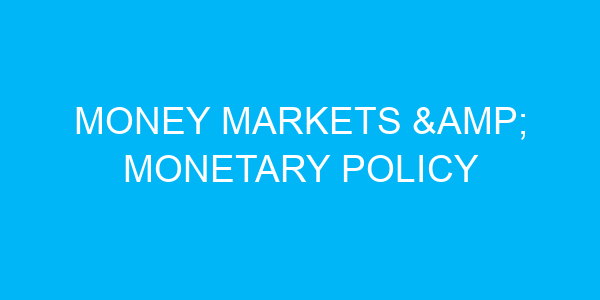96. The term “market liquidity” refers to:
a. The ease with which an asset can be bought or sold in the market without significantly impacting its price
b. The ability of a company to generate profits from its operations
c. The availability of credit in the money market for businesses and individuals
d. The stability of exchange rates in the foreign exchange market
97. The term “credit crunch” refers to:
a. A sudden decrease in the availability of credit in the money market
b. A sudden increase in the availability of credit in the money market
c. A sudden decrease in interest rates in the money market
d. A sudden increase in interest rates in the money market
98. The term “monetary policy transmission” refers to:
a. The process by which changes in the central bank’s policy rate impact the broader economy
b. The process of converting physical currency into digital currency
c. The process of printing new banknotes and coins
d. The process of transferring money between commercial banks and the central bank
99. The term “systemic risk” refers to:
a. The risk of a widespread collapse of the financial system
b. The risk of default on a specific financial instrument
c. The risk of interest rate fluctuations in the money market
d. The risk of stock market volatility
100. The term “capital injection” refers to:
a. The infusion of new capital into a financial institution to enhance its solvency
b. The withdrawal of capital from a financial institution due to poor performance
c. The redistribution of capital from one sector of the economy to another
d. The issuance of new shares by a company to raise funds



